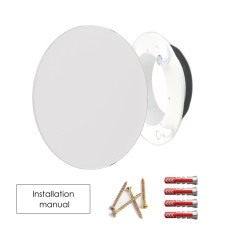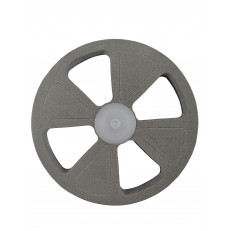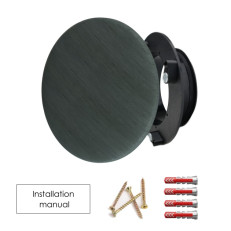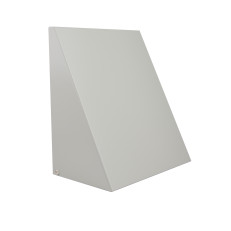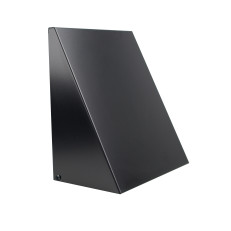Recovery vs. hood
Which hood to choose for recuperation is a frequent question of our clients. In this article, we will try to explain to you how to remove the polluted air generated during cooking, frying and baking, so that the ventilation system with recuperation is not affected.
The basic rule is that oily air must not enter the recovery system. In any case, it must not travel into the recuperator, which could irreversibly destroy it.
A general problem with fume hoods = negative pressure
A classic exhaust hood takes the air out of the kitchen and thus creates a negative pressure in the house. If you do not open the window or if you do not have other easy access of outside air to the interior, it may happen that after a while the exhaust hood has nothing to extract and also sucks air from the recuperation pipe. Since the nearest outlet is the drain valve in the kitchen, the negative pressure can in extreme cases cause a change in the direction of the air flow in the pipe that leads to the kitchen. That is all dirt accumulating in the pipeline at once can start to travel in the opposite direction.
Possible Solution
1) CIRCULATION (RECIRCULATION) DIGESTOR
This type of hood is recommended by most designers. Air with grease is filtered and remains in the same room. There is no change in pressures. The recovery system is not affected in any way. However, the majority of clients and kitchen studios usually do not believe in this solution.
The hood must be equipped with a grease filter. A combination of expanded metal (the stainless steel cartridge filter is dishwasher safe) and a carbon filter that absorbs many odors is ideal. A fundamental requirement is regular maintenance. High-quality hoods will notify you of the need for filter replacement or service.
The choice of circulation hoods is really large today, and a hood doesn't have to mean anything ugly. On the contrary, it can become the design dominant of the entire kitchen. The advantage of these hoods is that it is not necessary to connect them to any pipes.
Design circulation hoods suitable for systems with recuperation can be found here .
2) EXHAUST HOODS
An exhaust hood as described above is not a completely ideal solution. However, if you insist on extracting air from the house, the situation can be improved in the following ways:
a) provision of air supply - window opening, wall supply elements, etc. The problem arises in winter, when cold air with a flow rate of e.g. 500m3/h is not pleasant.
b) wiring with a unit or a servo drive that switches off the recuperation unit or closes the branch to the kitchen in the event that the hood is started
(not suitable for all types of units due to regulation or frost protection)
c) provision of air supply through the heater - an extreme option, but we have already installed it several times for our demanding clients. A fan as strong as the hood is chosen and the assembly is installed - filter box, fan, heater + protective elements and regulating elements. The control is then connected to the hood.
We offer these extractor hoods on our website.
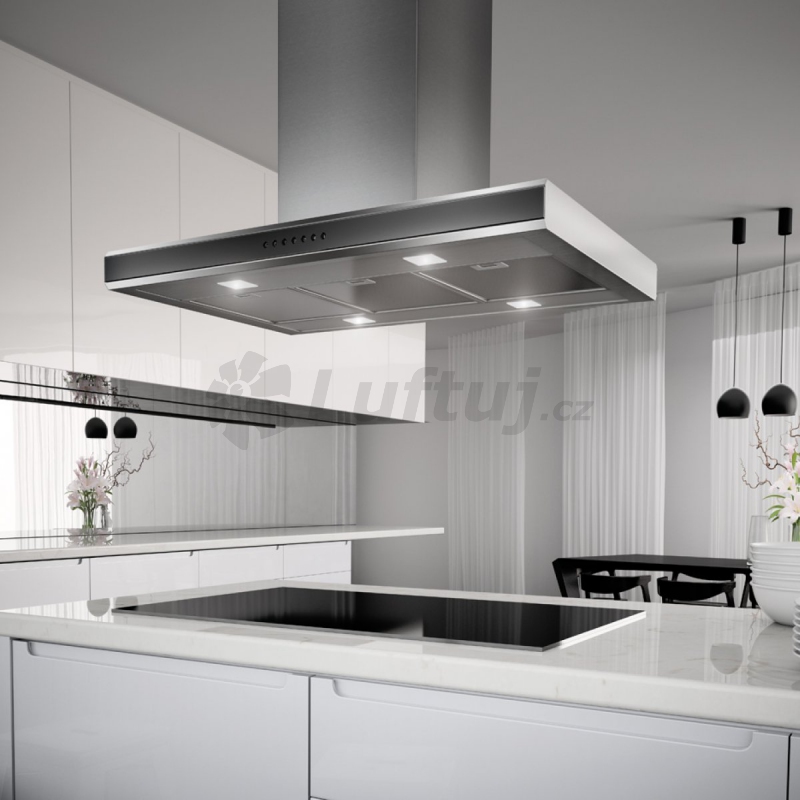
3) COMBINED HOODS (POSSIBILITY TO SWITCH BETWEEN CIRCULATION AND EXHAUST)
These hoods combine the advantages and disadvantages of both types of hoods. In summer, when an open window is not a problem and recuperation is switched off, it is not a problem to use the extraction function, and in winter, on the contrary, you switch to air circulation.
If there isn't a range hood that you like, any odath range hood can be turned into a recirculating one by adding a T-piece or a branch and flaps (either manual or with a servo drive ). Another option is to use a special three-way valve .
A pipe that you lead, for example, above the upper row of kitchen cabinets. In this case, high-quality filtration is required.
We offer the following combined hoods.
4) CONNECTION OF A MOTORLESS DIGESTOR FOR RECOVERY
Only some types of units allow this solution. It is essential that the recuperation unit has sufficient power and that the hood is equipped with quality filtration, as is the case with the circulation variant.
Most of the connection solution options are:
a) the unit is equipped with a fifth nozzle and the air from the hood bypasses the recuperator (i.e. the exhaust fan of the recuperation unit is used). Even so, the recuperation system is not functional (the recuperator is not subsidized by any warm air). This system offers, for example, selected SAVE units from Systamair.

(source www.systemair.com)
b) the unit allows for zoning. This means that the air outlet is divided behind the unit using a three-way flap. The flap regulates the flow of air from bathrooms, toilets, etc. and allows air to flow only from the kitchen branch. The system combines the advantages of fume hood operation (removal of vapors, odors and supply of fresh air) with the advantages of recirculation operation (prevention of heat loss). The hood connected to recuperation works silently, with minimal heat loss, but above all, it fulfills the conditions under which it is possible to certify the house as passive. Connection is offered, for example, by DUPLEX units from ATREA.

(source www.digestore-faber.cz)
The decision, which type of hood to choose, of course also depends on other factors (fireplace stove, frequency of frying, etc.). We leave the final decision to the client himself.
EDITED 13/12/2021


